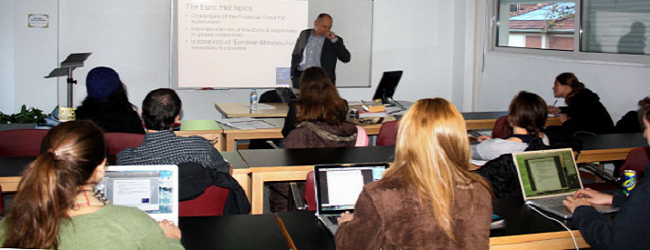So, I have put my thinking hat on and pulled together my top tips list for you. This has been learnt by too-many-mistakes-to-mention and I hope that it helps you teach the teachers one day too.
1. Look the part. Do not get dressed with a toddler at your heels. You may end up doing a three hour workshop in front of teachers with your blouse inside out. True story – and that’s not even the worst bit. No-one told me. Sob. Sniff.
2. Never do in two sessions what you can do in one. Even if the idea of a shorter session / excuse to get home earlier tempts you. It is not worth it. Teachers like their information straight to the point with no messing. If you do two attempts, they will feel that they can mark throughout the first session (even if you stand, silently ‘aggressive’, right behind them) and / or just listen into the last 20 minutes of session two.
3. Quality resources. Check for typos, straight lines and ‘blow your mind’ level information. Many teachers can spot an out of place apostrophe at 20 metres. They are quick to discount anything that does not interest them – or looks repeated. And I do not mean just that page. If they don’t like the first paragraph of a piece, they can leave an entire booklet by their vacant seat at the end. Ouch.
4. Play with the seating plan and work the room. They will expect to sit in lines, on their bum, in a Victorian classroom scenario. Why? I do not know. But if you mix up the groups (LSAs /TAs, site staff, departments, experience, year groups) IT WILL KEEP THINGS FRESH. And they will gain more from the session ultimately, even if this suggestion initially meets with groans. Also, ensure you use the space well too. Back off from the front and walk around the room. Come into the middle for questions, and make sure your resources support your movement. Put them on the tables, or even better for those restless hands, under the tables / chairs. Ensure you can ‘click’ from afar and that there is enough room for them to see what they need to and even more around.
5. Fun, engaging activities. Consider adult-themed events (no, not those!), like pub quizzes and speed-dating as ways of sharing or challenging information. Use events like Fresher’s Fayres or business conferences to showcase ideas, with some staff demonstrating and others circling taking notes to feedback at the end. You can also use activities that you would use with students. Most sessions now include
6. Post-It notes and flip charts, but try to move beyond this. You could use online survey sites to help (like Survey Monkey) or get creative with large-scale installations to illustrate concepts. The idea is that they remember what you say and are engaged – consider what point you want to make and go from there. Another idea I have used (with success, I add hastily!) is to use ‘Mission: Impossible’ style envelopes and given missions (strategies) to staff. This has created excitement, intrigue and secrecy = not words you associate with CPD normally, eh?! Consider a reflective session for a later date. Yes, I know that I said don’t do two, it can help to have a surgery style ‘follow-up’ workshop to ensure that everyone understood what you were saying, and has a chance to feed back / listen / steal other people’s ideas. Teachers do not get much time to reflect on their work or share their ideas, so this is a beneficial opportunity for some headspace.
7. Create a relationship with your audience. Quickly show them the person you are. You need to balance illustrating your experience, without boasting, with a sense of your personality. It is a thin line, my friends. I also try not to wear suits. It seems silly, but I could not stand the consultants who ‘told us’ what to do in the workshops the Head had clearly asked for. I try to look like a member of staff – to illustrate that I understand what it is like to work in the field too. Otherwise you may find some of the audience resent you before even have the chance to open your mouth. Lastly, use bribery. Some free pens or resources were always something I responded well too…
8. Understand what the priorities are for the school and its staff. If the school is under lots of pressure, consider your style, pace and tone. Staff may not want to listen to someone else tell them they need to change / improve / tweak what they are doing. If the school needs challenging, ensure you support and ask questions. Be honest to yourself and be honest with them. Being a strong presenter is key in this arena.
9. Differentiation. Consider how you can personalise the session to the people in the room. This can be hard when you don’t know them, so ensure to be someone who can really helps with the subject. It might be reflected in the grouping, you may carousel activities or it may be in terms of the support that you give as you circle. Remember how you felt in these sessions, and what worked. Then do that.
10. Refreshments. Water and fruit. Caffeine and biscuits. Pizza and doughnuts. Whatever. Munching and well-watered teachers are much happier than hungry, dehydrated ones.
And the last tip? Be inspirational. I know, it’s a pretty tall order, but you know what? It really is what they deserve.
Do you have any tips to add? Or are you a teacher with your own suggestions? Let us know in the comments below.


















